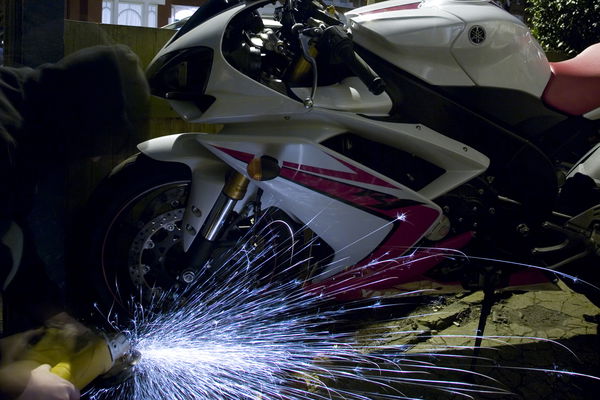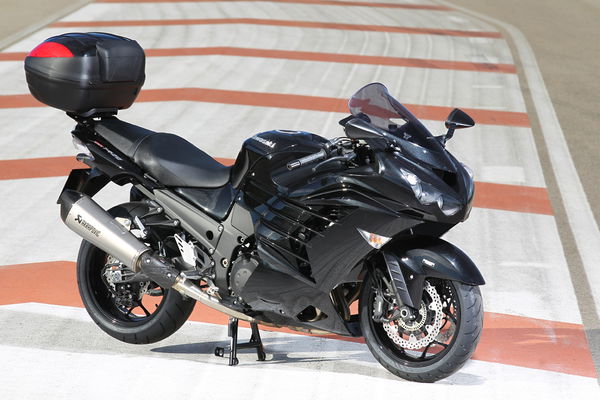Visordown's motorcycle insurance guide
Insurance is a right hassle right up to the point the man with the skillsaw has your bike away - then it's a God send. Here's our guide


Simple rule is: get covered. Given the price and availability of insurance it’s wise to check what you can get and at what price even before you get involved in bike buying itself. Insurance is one of the most significant factors when it comes to bike choice.
Good news is that with the advent of internet comparison sites bike insurance has become a very competitive market and insurers are having to lower their premiums to get your business. And of course the websites mean you can be better informed on the product you’re getting and how it compares.
Look out too for insurance deals being offered by the manufacturers. Many are now offering their own deals, as an incentive to buy their machines, at premiums below the usual market rates. Check out the conditions and also find out what happens when it comes to renewal time – do the discounts continue?
Insurance cover varies, and the general rule is the more cover you want, the more you’ll have to pay. Although there are discounts, and the price of a premium varies a lot depending on your circumstances. Your driving and claims record, age, where you live, what you do, and what you ride are all taken into account.
Policy types
It is a legal requirement, if you want to ride on any public road, to have a valid insurance policy. There are three types of cover available.
Third party only is the lowest level of cover and consequently the cheapest. If you are involved in an accident with another road user and the accident was your fault the third party can claim against your policy. Unfortunately you won’t be able to claim a penny for yourself or your bike.
Third party, fire and theft is the next level of cover. This policy offers the same level of cover as a third party only policy but your insurers will pay out if your bike is stolen, or damaged by fire, lightning, explosion, or attempted theft.
Theft cover is important, especially when it comes to motorcycles, and the difference in price between the two, basic policies is usually marginal. As with third party only cover, you will not be able to claim anything if you happen to slip off your bike, or even drop it in a car park. Some insurance companies will cover clothing and accessories that are stolen along with your bike, but not all. So always check the small print.
Fully comprehensive policies offer the best level of cover. Even if your one-day-old sports bike happens to topple off the side stand you’ll be able to make a claim to cover the damage. Clothing and accessories can also be covered if they sustain any damage arising from an accident, or are stolen along with your bike. If not, you may well be able to claim for clothing and helmets on your household insurance.
Depending on your chosen insurer you may also be able to cover yourself against any legal costs, recovery costs and medical costs.
INSURANCE TERMS GLOSSARY AND HELPFUL TIPS
Certificate of Insurance:
Once you have paid for your insurance your insurer will issue a Certificate of Insurance. This is proof that you are insured.
No Claims Bonus/Discount:
The discount that you have earned on a previous insurance policy. Insurers give discounts determined by the number of years that a rider remains claim-free and a NCB must be earned separately for each insured bike. However, a few companies give discounts for second bikes so its worth checking. Some companies will offer up to 70 discount if you have fi e years no claims.
Protected No Claims Bonus:
Some companies will allow protection of your no claims bonus. This means you can make a number of claims over a specific period of time without your NCB being reduced. But even if you protect your NCB, this does not prevent your premium from rising if you make a claim. Protecting the bonus only protects your bonus discount. If there has been a claim, the protected discount is applied but against a higher premium.
Excess:
The amount of money that you pay in the event of a claim. Compulsory excesses differ with various insurers. Young rider excesses are common across the industry but the type of bike you ride or the area in which you live can also affect this.
Voluntary excess:
This is the amount a rider chooses to pay in addition to the compulsory excess. If you decide to bear an additional excess it may bring your premium down but its a good idea to check if any compulsory excesses already apply to the policy, as voluntary excess is paid in addition to any compulsory excess.
Uninsured Loss Recovery (ULR):
The traditional way in which insured riders protect themselves against uninsured drivers or hit and run incidents is called Uninsured Loss Recovery or Legal Expenses Cover (LEC).This sometimes comes as standard on bike insurance in the UK so it's always worth checking. If not, it's normally available for an additional premium. If you're looking for insurance online and can't find this on the insurer's website, call them.
Material Fact/Modifications:
This is any factor that might affect a broker or underwriter's decision to provide you with insurance. UK law means you are obliged to advise your insurance company of any material facts, such as points on your licence or modifications to your bike. If facts come to light after a claim has been made, the insurer has the right to refuse payment for all or part of the claim.
Types of cover
Third Party Only Cover (TPO):
Covers you for claims made by other people, against you, for death, bodily injury or damage to their property.
Third Party, Fire and Theft Cover (TPFT):
Covers you for claims made by other people, against you, for death, bodily injury or damage to their property and if your bike is
stolen or damaged by fire.
Comprehensive Cover (COMP):
Covers you for claims made by other people, against you, for death, bodily injury or damage to their property. This also covers your bike if it is stolen or damaged by fire, accidental or malicious damage.
Variations
Some insurers will replace a bike like-for-like; usually if a machine is deemed beyond economical repair or is stolen and not recovered, and is less than six months old.
Insuring more than one bike on the same policy is becoming less common, but is available. In most cases you will have to take out a separate policy for each bike but you should receive a reasonable discount from an insurance company for multiple policies.
Some policies will also provide cover to allow you to ride a bike belonging to someone else, though the cover will usually be reduced to third party only.
In the event of a claim you will be liable for any damage excess as specifi ed on your policy. You can opt to pay a higher excess if you want to, which may reduce the price of your premium. If you are involved in an incident caused by a third party you will be able to claim your excess back from their insurers.
There are some companies that specialise in certain areas of motorcycle insurance. Female motorcyclists, people wanting to insure older (classic) machines, and riders who have completed an advanced training course can all benefi t from a reduction
in premiums.
If you intend taking your bike abroad most policies will cover you and your bike, but cover is usually reduced to the minimum requirement for that country. Before you go touring you should contact your insurers who, in most cases, will be able to upgrade
your policy for when you are away.
Although dealers can point you in the right direction when it comes to insuring your bike you will have to deal with the insurance companies direct or contact an insurance broker.
So shopping around is definitely the key. Use the phone numbers and web addresses listed below to find the best quote. Once you have found a policy you are happy with and don’t fancy forking out for the premium in one lump sum you can elect to pay by direct debit, which may save a bit of cash to put to put towards your new bike.
Quick tips
- Always shop around
- Use the internet for research
- Follow up with phone calls to haggle
- Check for manufacturer’s policies
- Check the excess and exclusions
- Consider garaging and other security
- Payments can be spread
For some tips on how to save money on your insurance, read our tips for cheaper motorcycle insurance.











